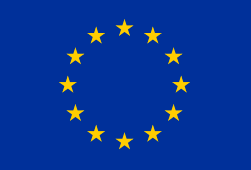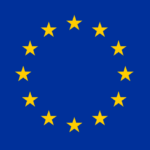The European Union Web Accessibility Directive requirements:
- Requires websites to publish a public accessibility statement with conformance information
- Ensure that all website and mobile content meets WCAG 2.0 Level AA
- Provide users with resources for reporting accessibility issues
- Provide a link that explains the enforcement procedures of the EU Web Accessibility Directive
There are approximately 135 million people in Europe, who live with some form of disability. This number is expected to increase as populations’ age. In the modern world, many people rely on computers, smartphones, and other digital devices for information. Without defined standards for digital accessibility, many users encounter barriers that prevent them from performing everyday tasks. The EU’s Web Accessibility Directive strives to establish digital accessibility standards for public organizations within the European Union.
What is the EU Web Accessibility Directive?
The Directive obliges all public sector bodies in the EU to make their online websites and mobile applications accessible. The primary purpose of the Web Accessibility Directive is to ensure that all government websites follow the same accessibility standards. The regulation also affects private companies that offer resources through government websites.
The European Union published these guidelines to standardize the framework around web and mobile accessibility of public sector organizations. The Directive obliges websites and apps of public sector bodies to meet specific technical accessibility standards. There are a limited number of exceptions that include broadcasters and live streaming.
The Directive requires:
- An accessibility statement for each website and mobile app;
- A feedback mechanism so users can flag accessibility problems or request information published in a non-accessible content;
- Regular monitoring of public sector websites and apps by Member States, and reporting on the results.
The European Union Web Accessibility Directive has been in force since 2016. However, the authors included enforcement deadlines to provide webmasters with time to make the necessary changes. As of June 2021, the directive is past its final stage of compliance. The regulations are enforced by member states, and websites that violate the directive may face fines.
Timeline for Implementation
- September 23, 2018 – Member States must transpose this Directive to national legislation
- September 23, 2019 – All new public sector websites must conform
- September 23, 2020 – All public sector websites must conform
- June 23, 2021 – All mobile apps must conform
- December 23, 2021 – Websites of member states will be monitored and publicly reported
- 23 June 2022 – The European Commission will carry out a review of the application of this directive
Who has to comply with the EU Web Accessibility Directive?
The EU Web Accessibility Directive applies to public sector bodies, including:
- State, regional or local authorities
- Bodies governed by public law
- Associations formed by one or more such authorities or one or more such bodies governed by public law
- The Directive also encourages member states to extend its application to public-private sector bodies. Including healthcare, childcare, social inclusion, transport, electricity, gas, etc.
Public service broadcasters or NGOs that do not provide services for people with disabilities are excluded from this Directive.
What web accessibility standards does the EU Web Accessibility Directive use?
The EU Web Accessibility Directive uses the European standard EN 301 549. EN 301 549. The European Standard has adopted WCAG 2.1 guidelines. This covers accessibility for web content, electronic documents, and non-web software, such as native mobile apps.
WCAG and the EU Web Accessibility Directive
EN 301 549 covers conformance to WCAG 2.1 level A and AA, but not level AAA. This enables a seamless harmonization with other procurement standards. Web authors and accessibility specialists must enhance website and app accessibility beyond outlined standards when applicable. The European Standard follows the four principles of accessibility: perceivable, operable, understandable, and robust.
Perceivable
The information and user interface components of websites and mobile applications must allow users to perceive them clearly.
Operable
The functionality and navigation of the web and mobile user interface components must be usable.
Understandable
The information and operation of the web and mobile user interface must be easily understood by people of differing abilities.
Robust
Users must interpret the website content across a range of assistive technologies and adapt to new user agents.
What does the EU Web Accessibility Directive cover?
The content covered by the Directive for public sector websites and mobile applications, includes:
- Non-textual information
- Downloadable documents
- Form
- Two-way interaction such as the processing of digital forms and the completion of authentication, identification and payment processes
The Directive does not apply to the following content:
- Office file formats published before 23 September 2018
- Pre-recorded time-based media published before 23 September 2020
- Live time-based media
- Online maps and mapping services
- Third-party content that is not funded, developed or controlled by, the public sector body concerned
- Reproductions of items in heritage collections that cannot be made fully accessible
- Content of extranets and intranets published before 23 September 2019, unless these websites undergo a significant update
- Archive content of websites and mobile applications
How to comply with the EU Web Accessibility Directive?
To comply with the EU Web Accessibility Directive, member states must ensure public sector bodies make websites and apps accessible. They must adhere to WCAG principles – perceivable, operable, understandable, and robust. Public sector bodies must also commit to the following:
Producing an Accessibility Statement
EU public sector bodies must offer an accessibility statement explaining any inaccessible elements on their website or app, along with alternative access information. The statement should also feature a feedback mechanism for users to report accessibility issues, request information, or submit complaints.
Monitoring Accessibility
Conformance to the standards in the Directive should be monitored using a methodology that includes:
- The periodicity of the monitoring and website sampling arrangements;
- The sampling of web pages, of the content on those pages and of the content of mobile apps;
- A description of the way to determine compliance;
- Where deficiencies are found, a mechanism to help public sector bodies correct them;
- Arrangements for automatic, manual and usability tests.
Reporting
Member states must submit web accessibility progress reports to the EU Commission every three years, starting from 23rd December 2021. The report must cover the information and results of the enforcement of the Directive. The content of all the reports will be made public in an accessible format. Besides reporting on the progress from the monitoring activity, the report should also include:
- A description of the mechanisms for consulting with relevant stakeholders on the accessibility of websites and mobile applications;
- Procedures to make public any developments in accessibility policy relating to websites and mobile applications;
- Experiences and findings from the implementation of the rules on conformity with the accessibility requirements;
- Information on training and awareness-raising activities.
What happens if you fail to comply with the EU Web Accessibility Directive?
There are no set penalties for non-compliance. Penalties for non-compliance with the directive and related local legislation vary in each EU member state.
Accessibility Statement
As per the 2020 Regulations, public bodies must create a detailed accessibility statement for their websites and mobile applications. This statement should be accessible and follow the model accessibility statement in Commission Implementing Decision (EU) 2018/1523.
The Accessibility Statement must include:
- A Statement of Commitment of the public body to making its websites and mobile apps accessible.
- The Compliance Status of the public sector bodies’ website and mobile apps with the standards described above.
- A description of inaccessible content, reason for inaccessibility and accessible alternatives provided.
- A mechanism to request information for inaccessible content.
- A feedback mechanism to notify of any failure of any websites or mobile applications to comply with the accessibility requirements.
- A link to the redress or complaint provisions.
How codemantra helps your website to comply with the EU Web Accessibility Directive?
codemantra’s AI-powered platform, accessibilityInsight, provides scalable modules to test and ensure robust accessibility compliance across all document types. The platform facilitates automatic document remediation based on EN 301 549, WCAG 2.1 Level AA, and international accessibility standards, enabling efficient large-scale compliance. Additionally, users can engage in interactive remediation as required.
Interested to know more?
Call us at 1 (800) 769-9715 or email us: engage@codemantra.com for more information on how public sector bodies can achieve compliance.









